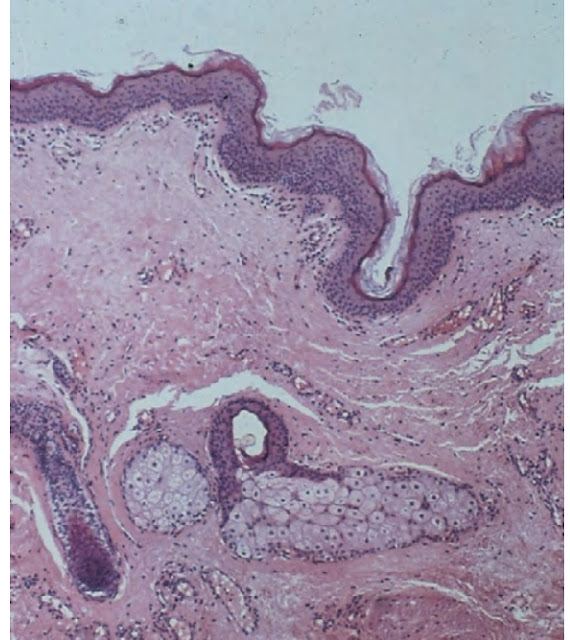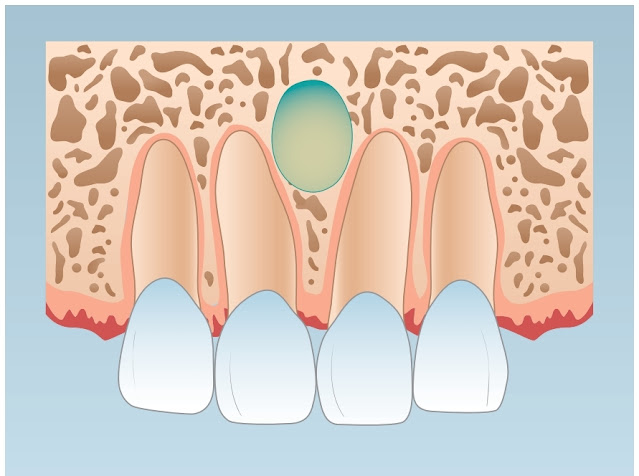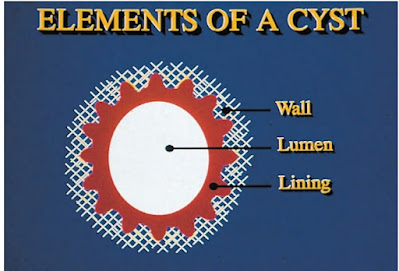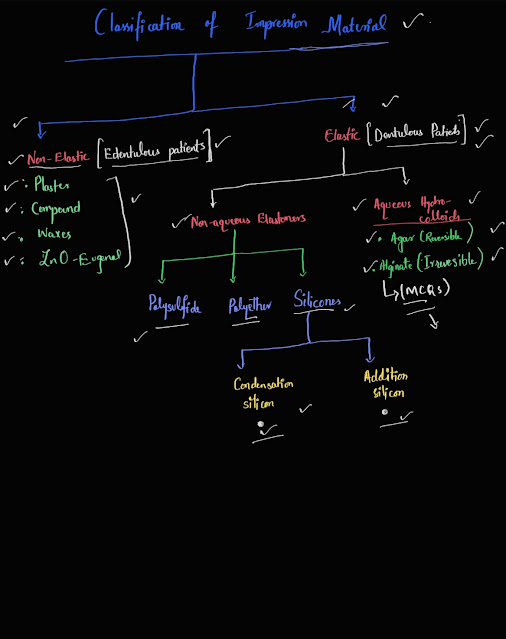An odontogenic cyst derived from rest of malasssez proliferate in response to inflammation. It is also known as apical periodontal cyst or redicular cyst.
It is associated with devitalized tooth and form in response to pulp inflammation or necrosis.
Histopathology:
1. Epithelium is nonkeratinized stratified squamous epithelium.
2. Connective tissue contain inflammatory cells such as neutrophils.
3. Cyst has laminated hyaline bodies known as ruston bodies.
4. Cyst wall has multinucleated giant cells, cholesterol and hemosiderin.
5. Cystic lumen has proteinaceous fluid.
Formation of periapical cyst:
1. Cells of the rest of malassez proliferate in response to inflammation.
2. As cells proliferate inner cells get deficient of nutrients which are getting by duffusion.
3. So central cells undergo ischemia and liquifactive necrosis.
4. Central necrotic area creates an osmotic gradient which draws water inwards causing hydraulic pressure in cyst too expand.
Clinical Features:
1. It is associated with devitalized tooth which is its identifying feature.
2. It is more commonly present isn apical areas near canal opening.
3. It is usually 1 cm in diameter.
4. If the tooth is extracted without removing the cyst it will form Residual cyst.
Radiographic features:
1. It appears as well circumscribed corticated radiolucency at the apex of the nonvital tooth.
2. It is present laterally then appears semicirular
3. In anterior teeth is is reffered as globulomaxillary radiolucency.
Differential diagnosis:
a. Periapical granuloma.
b. Lateral periodontal cyst.
c. Odontogenic keratocyst.
d. Central giant cell granuloma.
e. Calcifying odontogenic tumor.
f. Adenamatoid odontogenic tumor.
g. Odontogenic myxoma.
For more watch here








.jpeg)



.jpeg)
.jpeg)



























.jpeg)













